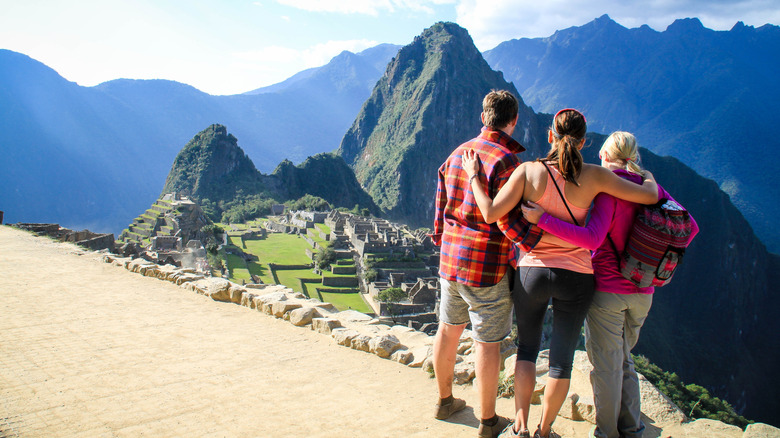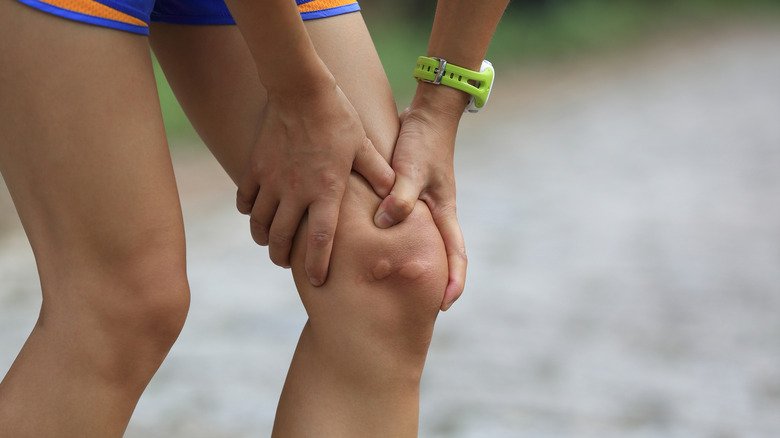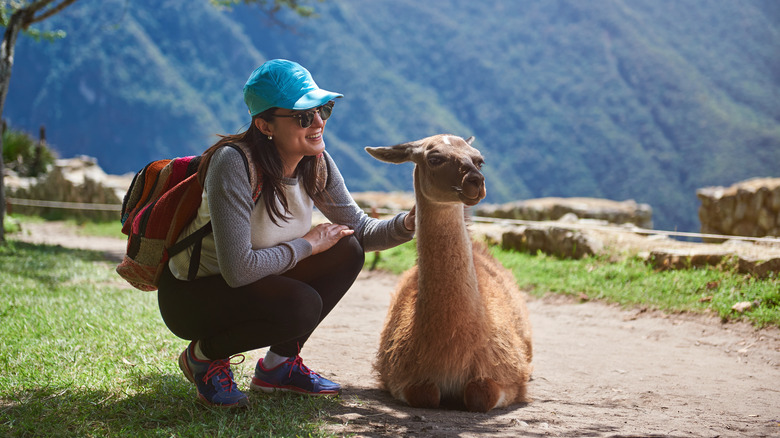The Common Article Of Clothing Tourists Should Avoid Wearing At Machu Picchu
When planning a trip to the majestic ancient ruins of Machu Picchu – nestled at an altitude of 7,900 feet in the Peruvian Andes – the excitement tends to revolve around the breathtaking views, the intricate stone constructions of its 500 buildings, and the mystery of this ancient Incan city: no one knows for sure why it was abandoned. However, amidst the planning and packing, one aspect often overlooked by many excited travelers is the appropriate and tactical choice of attire, specifically when protecting themselves against the local bug population.
Machu Picchu is home to a variety of biting insects, including sandflies, mosquitoes, midges, ticks, wasps, and chiggers. These pests are notorious for their relentless bites, which can cause severe discomfort and mar an otherwise incredible experience at one of the Seven Wonders of the World. The problem is exacerbated by the fact that regular insect repellents do not easily deter these insects, and their bites result in itchy, red welts that can often last for weeks.
Because Machu Picchu is high up in the mountains on the edge of the Amazon rainforest, its subtropical climate — with 75-degree temperatures during the warmest part of the day and humidity levels averaging 45% to 65% – might convince many that "less is more" when it comes to clothing. However, protective clothing is a necessity; shorts and short-sleeve tops will make you a prime target for blood-thirsty Machu Picchu insects who thrive in the site's humid and lush environment.
Why shorts and mosquitoes are a bad match
Unfortunately, Machu Picchu's mosquito season coincides with the best time to visit the site: during the dry season from April to October. Like humans, mosquitoes don't enjoy being out in the rain. The dry season is also the peak season with high visitor numbers, as the weather is at its best. However, even during the dry season, there is a chance of rain, fog, and cloudy skies. During the wet season from November to March, it rains every day, accounting for 80% of the total annual rainfall in Machu Picchu. In February, the wettest month, the trail is closed altogether.
Despite this warm and humid weather that tempts many tourists to wear shorts and other minimalist clothing, doing so at Machu Picchu can lead to dire consequences. Tourists wearing shorts expose themselves to the risk of severe insect bites and insect-borne diseases. Observations and accounts from visitors highlight scenarios where individuals have suffered from numerous giant, swollen, red patches on their skin. Moreover, solar radiation in the area is high. Long bottoms and tops can protect you from gnarly sunburn.
The Centers for Disease Control and Prevention recommends staying updated about current health issues and taking precautions against these risks when traveling to Peru, Machu Picchu, or anywhere further into the surrounding jungle areas. Vaccines, medications, and other protective measures against insect-borne illnesses such as malaria, dengue, Chagas disease, yellow fever, Oropouche fever, Chikungunya, Leishmaniasis, and Zika are advised.
Practical tips for Machu Picchu visitors
The locals, accustomed to dealing with these pests daily, have developed their unique protection methods. One unconventional yet reportedly effective method is rubbing shampoo on the legs and not washing it off. This creates a "second skin" that acts as a barrier against insect bites. Additionally, repellents with a high concentration of DEET are recommended over regular repellents and can offer a higher degree of protection. Look for repellents with a minimum 25% concentration of DEET with an efficacy duration to match the length of your visit. The Environmental Protection Agency has a search tool to help you find the right repellent for you. Apply it generously and frequently, especially on any exposed skin and on clothing edges near the skin.
Otherwise, don't dress to impress! Dress to protect and hike comfortably. Opt for lightweight, breathable pants and long-sleeve tops in lighter hues (mosquitoes are attracted to dark colors). Consider insect-repellent clothing, which is pre-treated with insect repellent (permethrin-treated) to provide an additional layer of protection. Choose garments that cover as much skin as possible but still offer some ventilation to accommodate the warm, humid climate. Mosquitoes love biting feet and ankles because those body parts have more heat and moisture and are in better proximity to those juicy blood vessels they're after so hiking boots might be a good idea. Ensure there is no gap between your pants and socks or between sleeves and gloves (if you choose to wear them).


